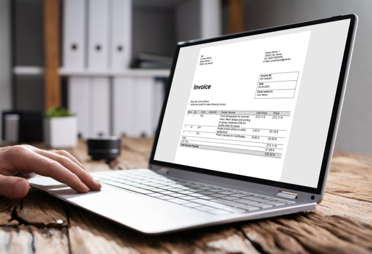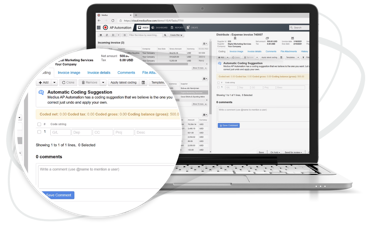Duplicate invoices: What are they and how to prevent them
Duplicate invoices present a unique challenge in the realm of business finance, affecting the accuracy and efficiency of financial processes. This article aims to provide a comprehensive understanding of what duplicate invoices are, their impact on business operations, and how they can be effectively managed and prevented. Through this exploration, businesses can gain valuable insights into maintaining financial integrity and operational efficiency.
What are duplicate invoices?
Duplicate invoices, also known in the industry as 'double invoices,' occur when the same bill is processed more than once, leading to potential financial discrepancies. They can manifest in various forms, such as identical invoices submitted multiple times, invoices with minor alterations, or invoices sent through different channels.
Understanding these nuances is crucial for businesses to recognize and tackle the issue effectively. In this section, we'll break down the different scenarios that lead to duplicate invoices and the mix of underlying causes, both intentional and accidental.

Fraudulent causes of duplicate invoices
Duplicate invoices are not always the result of errors. Sometimes they're deliberate acts of fraud. A common fraudulent activity involves issuing identical invoices with minor alterations to deceive the accounts payable system. For instance, a vendor might change the date or invoice number on a duplicate submission.

Even more concerning is internal fraud, where employees might process these duplicates for personal gain. According to the Washington State Auditor's Office, organizations make duplicate payments ranging from 0.8 percent to 2 percent of their total payments, signifying the extent of this issue. Recognizing and preventing such deceptive practices are crucial for financial security.
Learn more about preventing these and other types of invoice fraud here.
Common errors leading to unintentional duplicates
While some duplicate invoices result from fraud, many are born of non-fraudulent errors. These can include simple data entry mistakes, miscommunication between departments, or invoices being submitted through multiple channels.
For example:
An invoice might be sent via email and then mailed in paper form, leading to unintentional duplication. System glitches or oversights in invoice tracking can also contribute to this issue. Understanding these common operational pitfalls is essential for organizations to develop robust processes and checks that minimize the risk of inadvertent duplication.
The ripple effect of duplicate invoices on financial health
Although an industry study found that SMBs could potentially process up to $12,000 each month in duplicate invoices, the effects of duplicate invoices extend far beyond mere financial loss. They create a cascade of operational inefficiencies, from distorted financial statements to disrupted cash flow management. When invoices are paid multiple times, it not only leads to direct financial loss but also triggers a chain of administrative burdens. This includes time-intensive reconciliations, strained vendor relationships, and potential harm to the company's reputation.
Frequent duplicate payments can also signal deeper issues in financial controls, potentially exposing the company to increased audit risks and compliance issues. By recognizing the full spectrum of these impacts, businesses can better appreciate the importance of accurate invoice management and the need for robust systems to prevent such errors.
How to handle and resolve duplicate invoices
Resolving a duplicate invoice typically involves a few key steps. When an AP team identifies a potential duplicate, the first action is to verify its authenticity by comparing it against existing records, such as purchase orders and previously paid invoices.
If confirmed as a duplicate, the next step is to rectify the situation with the vendor. This might involve contacting the vendor to clarify the error and ensuring no payment is made on the duplicate invoice. Documentation of the error and communication within the finance team are also crucial to prevent similar issues in the future and to keep accurate records.
In some cases, especially if the duplicate was paid, it might be necessary to arrange a refund or credit with the vendor. This process underscores the importance of meticulous record-keeping and clear communication in managing AP effectively.
Using automation to prevent duplicate invoices
Preventing duplicate invoices is fundamentally about enhancing the efficiency and accuracy of the accounts payable process. This is where AP automation tools become invaluable.
These solutions offer features like automatic matching of invoices to purchase orders, real-time tracking of invoice statuses, and alerts for potential duplicates. By integrating such technology, businesses can proactively manage their invoice workflow, reducing the likelihood of duplicates significantly. This preventative approach not only saves time and resources but also fortifies the financial operations against errors and potential fraud.

Towards a future free of duplicate invoice errors
Understanding and managing duplicate invoices is crucial for maintaining accuracy in financial processes. Employing AP automation tools, like those offered by Medius, is a strategic approach to preventing these errors. These solutions provide sophisticated invoice matching, real-time tracking, and alerts for potential duplicates, safeguarding your business against both inadvertent and fraudulent duplicates.
Ready to enhance your AP processes with Medius?
With Medius's expertise in AP automation, businesses can effectively avoid the pitfalls of duplicate invoices. Our state-of-the-art solutions, including invoice automation, comprehensive AP automation, and fraud risk detection, ensure financial integrity and operational efficiency. Discover Medius and take the first step towards eliminating duplicate invoice errors in your business today.









